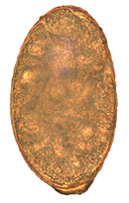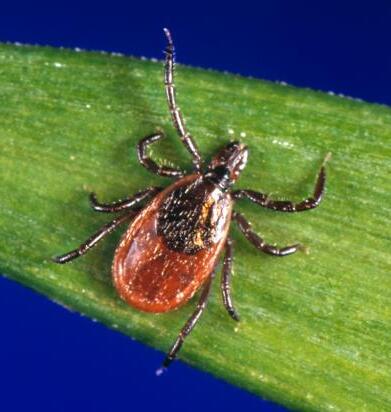|
Neorickettsia
''Neorickettsia'' is a genus of bacteria. Species or strains in this genus are coccoid or pleomorphic cells that reside in cytoplasmic vacuoles within monocytes and macrophages of dogs, horses, bats, and humans. '' Neorickettsia sennetsu'' causes Sennetsu ehrlichiosis. Unlike other forms of ehrlichiosis, ''Neorickettsia sennetsu'' is transmitted by trematodes from fish. '' Neorickettsia risticii'' causes Potomac horse fever Potomac Horse Fever (PHF) is a potentially-fatal febrile illness affecting horses caused by the intracellular bacterium '' Neorickettsia risticii''. PHF is also known as Shasta River Crud and Equine Monocytic Ehrlichiosis. It was first described i .... '' Neorickettsia helminthoeca'' is found in association with the trematode '' Nanophyetus salmincola'', and causes salmon poisoning disease in dogs and other canids. '' Neorickettsia elokominica'' causes a similar disease, Elokomin fluke fever, in canids and other species. Species * '' Neorickettsi ... [...More Info...] [...Related Items...] OR: [Wikipedia] [Google] [Baidu] |
Neorickettsia Risticii
''Neorickettsia risticii'', formerly ''Ehrlichia risticii,'' is an obligate intracellular gram negative bacteria that typically lives as an endosymbiont to parasitic flatworms, specifically flukes. ''N. risticii'' is the known causative agent of equine neorickettsiosis (also known as Potomac horse fever (PHF)), which gets its name from its discovery near the Potomac River in Maryland and Virginia. ''N. risticii'' was first recovered from horses in this region in 1984 but was not recognized as the causative agent of PHF until 1979. Potomac horse fever is currently endemic in the United States but has also been reported with lower frequency in other regions, including Canada, Brazil, Uruguay, and Europe. PHF is a condition that is clinically important for horses since it can cause serious signs such as fever, diarrhea, colic, and laminitis. PHF has a fatality rate of approximately 30%, making this condition one of the concerns for horse owners in endemic regions ''N. risticii'' is t ... [...More Info...] [...Related Items...] OR: [Wikipedia] [Google] [Baidu] |
Neorickettsia Elokominica
''Neorickettsia'' is a genus of bacteria. Species or strains in this genus are coccoid or pleomorphic cells that reside in cytoplasmic vacuoles within monocytes and macrophages of dogs, horses, bats, and humans. '' Neorickettsia sennetsu'' causes Sennetsu ehrlichiosis. Unlike other forms of ehrlichiosis, ''Neorickettsia sennetsu'' is transmitted by trematodes from fish. ''Neorickettsia risticii'' causes Potomac horse fever. ''Neorickettsia helminthoeca'' is found in association with the trematode ''Nanophyetus salmincola'', and causes salmon poisoning disease in dogs and other canids. '' Neorickettsia elokominica'' causes a similar disease, Elokomin fluke fever, in canids and other species. Species * ''Neorickettsia risticii'' * '' Neorickettsia sennetsu'' * '' Neorickettsia elokominica'' * ''Neorickettsia helminthoeca ''Neorickettsia helminthoeca'' is a bacterium in the ''Neorickettsia'' genus that causes Salmon poisoning disease. Salmon poisoning disease Salmon poi ... [...More Info...] [...Related Items...] OR: [Wikipedia] [Google] [Baidu] |
Elokomin Fluke Fever
''Neorickettsia helminthoeca'' is a bacterium in the ''Neorickettsia'' genus that causes Salmon poisoning disease. Salmon poisoning disease Salmon poisoning disease (SPD) is a fatal disease of dogs and other canids caused by a rickettsial bacterium, ''Neorickettsia helminthoeca''. It results from eating raw salmon, trout, or salamander and is common in the Pacific Northwest. These fish and amphibians are infected with the larvae of a fluke, ''Nanophyetus salmincola'' through an intermediate host, the snail '' Oxytrema plicifer''. The larvae attaches to the intestine of the dog and the rickettsial bacteria are released, causing severe gastrointestinal disease and systemic infection. ''Neorickettsia elokominica'', carried by the same fluke, causes a similar disease known as Elokomin fluke fever (EFF) in canids, bears, raccoons, and ferrets. Symptoms Symptoms of SPD begin about one week after eating the salmon and include vomiting, diarrhea, loss of appetite, depression, high ... [...More Info...] [...Related Items...] OR: [Wikipedia] [Google] [Baidu] |
Salmon Poisoning Disease
''Neorickettsia helminthoeca'' is a bacterium in the ''Neorickettsia'' genus that causes Salmon poisoning disease. Salmon poisoning disease Salmon poisoning disease (SPD) is a fatal disease of dogs and other canids caused by a rickettsial bacterium, ''Neorickettsia helminthoeca''. It results from eating raw salmon, trout, or salamander and is common in the Pacific Northwest. These fish and amphibians are infected with the larvae of a fluke, '' Nanophyetus salmincola'' through an intermediate host, the snail '' Oxytrema plicifer''. The larvae attaches to the intestine of the dog and the rickettsial bacteria are released, causing severe gastrointestinal disease and systemic infection. '' Neorickettsia elokominica'', carried by the same fluke, causes a similar disease known as Elokomin fluke fever (EFF) in canids, bears, raccoons, and ferrets. Symptoms Symptoms of SPD begin about one week after eating the salmon and include vomiting, diarrhea, loss of appetite, depression, high ... [...More Info...] [...Related Items...] OR: [Wikipedia] [Google] [Baidu] |
Neorickettsia Helminthoeca
''Neorickettsia helminthoeca'' is a bacterium in the ''Neorickettsia'' genus that causes Salmon poisoning disease. Salmon poisoning disease Salmon poisoning disease (SPD) is a fatal disease of dogs and other canids caused by a rickettsial bacterium, ''Neorickettsia helminthoeca''. It results from eating raw salmon, trout, or salamander and is common in the Pacific Northwest. These fish and amphibians are infected with the larvae of a fluke, ''Nanophyetus salmincola'' through an intermediate host, the snail '' Oxytrema plicifer''. The larvae attaches to the intestine of the dog and the rickettsial bacteria are released, causing severe gastrointestinal disease and systemic infection. '' Neorickettsia elokominica'', carried by the same fluke, causes a similar disease known as Elokomin fluke fever (EFF) in canids, bears, raccoons, and ferrets. Symptoms Symptoms of SPD begin about one week after eating the salmon and include vomiting, diarrhea, loss of appetite, depression, high f ... [...More Info...] [...Related Items...] OR: [Wikipedia] [Google] [Baidu] |
Nanophyetus Salmincola
''Nanophyetus salmincola'' is a food-borne intestinal trematode parasite prevalent on the Pacific Northwest coast. The species may be the most common trematode endemic to the United States. The life cycle of the ''N. salmincola'' requires three hosts. The first intermediate host is an '' Juga plicifera'' stream snail. The second intermediate host is a salmonid fish, though some non-salmonid fishes also play a role. Lastly, the definitive host is most commonly a canid, though many other mammals are also definitive hosts, including humans. Transmission of ''N. salmincola'' to the definitive host occurs upon ingestion of parasite-infected fish. The parasite is most known for its association with " salmon poisoning disease", which, left untreated, is fatal to dogs and other canids. However, canids are affected by the ''Neorickettsia helminthoeca'' bacteria, for which ''N. salmincola'' acts as a vector, and not by the parasite itself. Very few known cases of naturally acquire ... [...More Info...] [...Related Items...] OR: [Wikipedia] [Google] [Baidu] |
Neorickettsia Sennetsu
''Neorickettsia sennetsu'' is a Gram-negative bacterium that causes Sennetsu ehrlichiosis. See also *''Neorickettsia risticii ''Neorickettsia risticii'', formerly ''Ehrlichia risticii,'' is an obligate intracellular gram negative bacteria that typically lives as an endosymbiont to parasitic flatworms, specifically flukes. ''N. risticii'' is the known causative agent of ...'' References Rickettsiales Bacteria described in 2001 {{alphaproteobacteria-stub ... [...More Info...] [...Related Items...] OR: [Wikipedia] [Google] [Baidu] |
Potomac Horse Fever
Potomac Horse Fever (PHF) is a potentially-fatal febrile illness affecting horses caused by the intracellular bacterium '' Neorickettsia risticii''. PHF is also known as Shasta River Crud and Equine Monocytic Ehrlichiosis. It was first described in areas surrounding the Potomac River northwest of Washington, D.C., in the 1980s, but cases have been described in many other parts of the United States, such as Minnesota, California, and Pennsylvania. Currently, it is found in more than 40 U.S. states and Canada.Pascoa, Elaine. "PHF Prevention." ''Practical Horseman'' July 2008: 60-66. Cause The causative agent of PHF is ''Neorickettsia risticii'' (formerly ''Ehrlichia risticii''), an intracellular rickettsial bacterium. Transmission The vector of ''Neorickettsia risticii'' is believed to be a trematode (fluke). The life cycle of the fluke takes it through freshwater snails and back into water, where it is ingested by the larval stages of several aquatic insects, including cadd ... [...More Info...] [...Related Items...] OR: [Wikipedia] [Google] [Baidu] |
Ehrlichiaceae
The Ehrlichiaceae are a family of bacteria, included in the order Rickettsiales The Rickettsiales, informally called rickettsias, are an order of small Alphaproteobacteria. They are obligate intracellular parasites, and some are notable pathogens, including ''Rickettsia'', which causes a variety of diseases in humans, and ' .... References External links * Rickettsiales Bacteria families {{alphaproteobacteria-stub ... [...More Info...] [...Related Items...] OR: [Wikipedia] [Google] [Baidu] |
Sennetsu Ehrlichiosis
Ehrlichiosis is a tick-borne bacterial infection, caused by bacteria of the family Anaplasmataceae, genera ''Ehrlichia'' and ''Anaplasma''. These obligate intracellular bacteria infect and kill white blood cells. The average reported annual incidence is on the order of 2.3 cases per million people. Types Six (see note below) species have been shown to cause human infection: * ''Anaplasma phagocytophilum'' causes human granulocytic anaplasmosis. ''A. phagocytophilum'' is endemic to New England and the north-central and Pacific regions of the United States. * ''Ehrlichia ewingii'' causes human ewingii ehrlichiosis. ''E. ewingii'' primarily infects deer and dogs (see Ehrlichiosis (canine)). ''E. ewingii'' is most common in the south-central and southeastern states. * ''Ehrlichia chaffeensis'' causes human monocytic ehrlichiosis. ''E. chaffeensis'' is most common in the south-central and southeastern states. * ''Ehrlichia canis'' * '' Neorickettsia sennetsu'' *''Ehrlichia muris ea ... [...More Info...] [...Related Items...] OR: [Wikipedia] [Google] [Baidu] |
Horse
The horse (''Equus ferus caballus'') is a domesticated, one-toed, hoofed mammal. It belongs to the taxonomic family Equidae and is one of two extant subspecies of ''Equus ferus''. The horse has evolved over the past 45 to 55 million years from a small multi-toed creature, ''Eohippus'', into the large, single-toed animal of today. Humans began domesticating horses around 4000 BCE, and their domestication is believed to have been widespread by 3000 BCE. Horses in the subspecies ''caballus'' are domesticated, although some domesticated populations live in the wild as feral horses. These feral populations are not true wild horses, as this term is used to describe horses that have never been domesticated. There is an extensive, specialized vocabulary used to describe equine-related concepts, covering everything from anatomy to life stages, size, colors, markings, breeds, locomotion, and behavior. Horses are adapted to run, allowing them to quickly escape predators, and po ... [...More Info...] [...Related Items...] OR: [Wikipedia] [Google] [Baidu] |
Trematode
Trematoda is a class of flatworms known as flukes. They are obligate internal parasites with a complex life cycle requiring at least two hosts. The intermediate host, in which asexual reproduction occurs, is usually a snail. The definitive host, where the flukes sexually reproduce, is a vertebrate. Infection by trematodes can cause disease in all five traditional vertebrate classes: mammals, birds, amphibians, reptiles, and fish. Etymology Trematodes are commonly referred to as flukes. This term can be traced back to the Old English name for flounder, and refers to the flattened, rhomboidal shape of the organisms. Taxonomy There are 18,000 to 24,000 known species of trematodes, divided into two subclasses — the Aspidogastrea and the Digenea. Aspidogastrea is the smaller subclass, comprising 61 species. These flukes mainly infect bivalves and bony fishes.https://www.biotaxa.org/Zootaxa/article/view/zootaxa.3918.3.2 Digenea — which comprise the majority of trematodes — ... [...More Info...] [...Related Items...] OR: [Wikipedia] [Google] [Baidu] |




